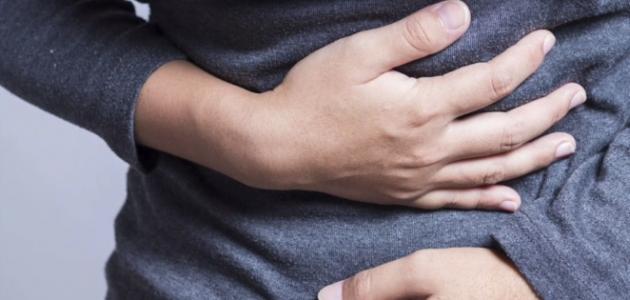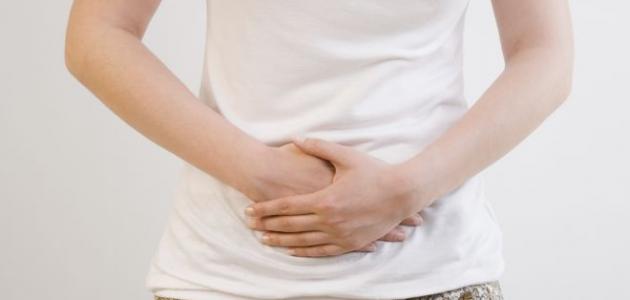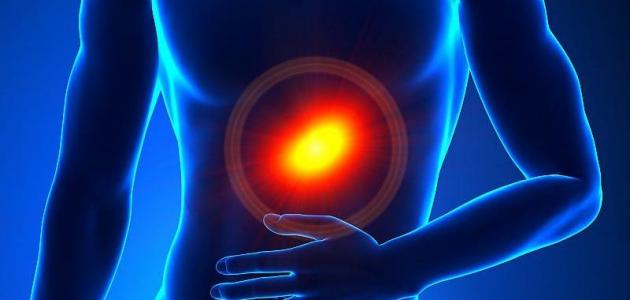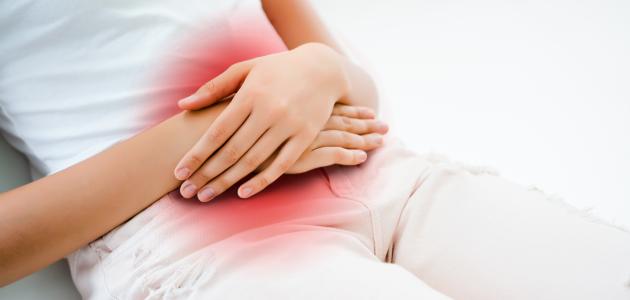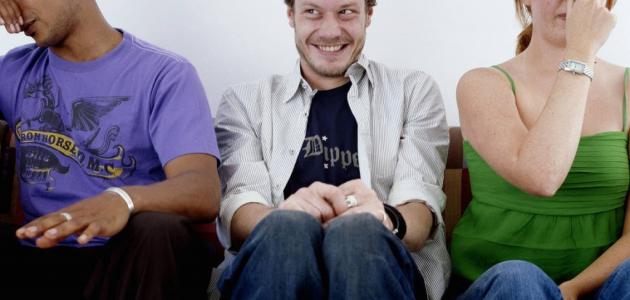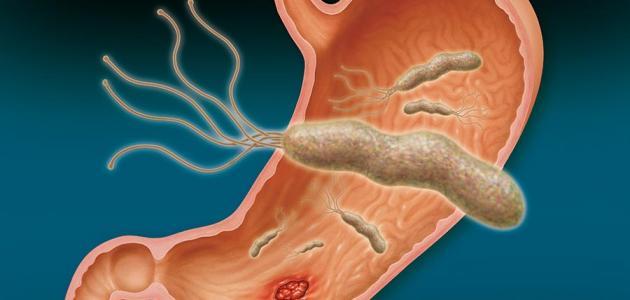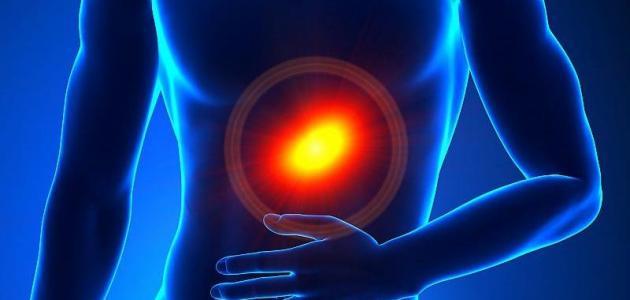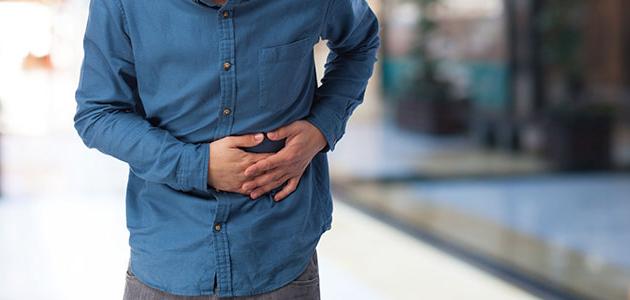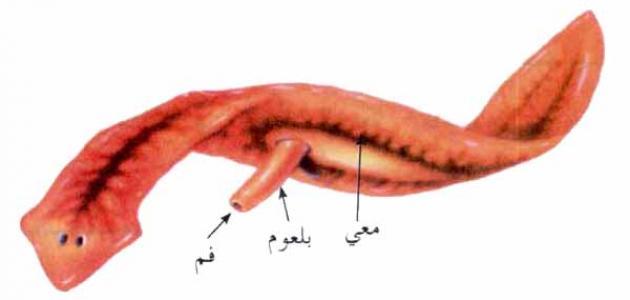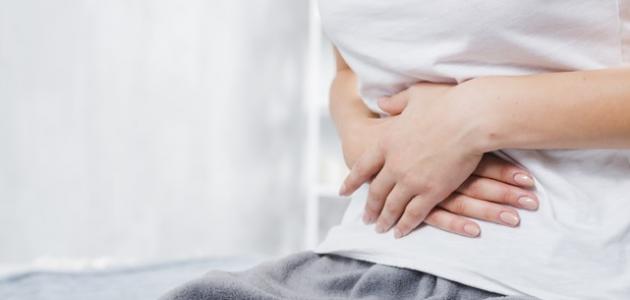Gallbladder
It is a hollow, pear-shaped vesicle, located on the right side below the liver. Its function is to store and concentrate the bile secreted by the liver before excreting it into the small intestine. This bile from the liver passes through the right and left hepatic ducts, then they unite to form the common hepatic bile duct.
The common hepatic bile duct unites with the bile duct that issues from the neck of the gallbladder, forming two components: the common bile duct, and through it the bile sap exits into the small intestine. Where the yellow juicer helps to digest the fatty substance and also to get rid of bilirubin resulting from the breakdown of red blood cells.
gallbladder disease
The gallbladder suffers from many diseases that can affect its function, which leads to the treatment of symptoms and problems that may result from it by eradicating it. Diseases that can affect the gallbladder:
- gallstonesIt is possible that stones in the gallbladder are formed from substances that are in the bile juice, such as: cholesterol, salts, and calcium, which in turn leads to blocking the course of the bile juice.
- cholecystitisIt can be acute or chronic, as a result of stones or a tumor that blocks the course of the bile juice, which leads to stagnation and the multiplication of bacteria in it, and thus inflammation of the gallbladder.
- Stones in the bile ductsWhere gallstones can slip into the neck of the gallbladder or bile ducts, which leads to inflammation.
- Gallbladder burst: If the symptoms of the gallbladder are neglected, this may lead to an explosion of the gallbladder, and if gallbladder diseases are not diagnosed and not eradicated, its explosion may lead to serious consequences that threaten the patient's life. As the mortality rate of gallbladder explosion may reach 30%.
- gallbladder abscess;The result of the accumulation of pus from an inflammation of the gallbladder, and pus is a group of dead cells, bacteria and white blood cells.
- gallbladder cancer: Although it rarely occurs, if it is not treated, it can lead to the spread of cancer to neighboring organs. Where cancer moves from the inner surface of the gallbladder to the outer surface, then to the organs adjacent to the gallbladder, and symptoms similar to those of acute cholecystitis occur.
- gangrene of the gallbladder;: Any organ in the body that does not work automatically decays, and this also happens in the event that the gallbladder stops working due to a lack of blood supply to it as a result of inflammation, diabetes, or any disease that impedes the blood flow.
- Gallbladder disease without stones (in English: Acalculous Gallbladder Disease): Here the patient suffers from symptoms of gallstones, but without the presence of stones in the gallbladder, and here a malfunction occurs in the gallbladder muscles or valves, so they do not work effectively.
- Calcification of the gallbladder wall (English: Porcelain Gallbladder): It is a rare case of gallbladder disease and most cases are due to gallstones.
Gallstones
In addition to cholecystitis, gallstones are one of the most common diseases that affect the gallbladder. The reasons that lead to the formation of gallstones are not fully known yet; Doctors believe that the bile juice contains a large amount of cholesterol that leads to the formation of gallstones, or that the bile juice contains a large amount of bilirubin, or that the gallbladder does not empty the bile juice correctly or completely. There are different types of stones that may form in the gallbladder, including: cholesterol stones, yellow in color, which are the most common, black pigment stones, which are dark brown or black in color and include bilirubin in their composition, and mixed stones.
Read also:Hernia summaryThere are several things that lead to an increase in the possibility of a person getting gallstones, including:
- Females usually get gallstones at a greater rate than males. Because estrogen raises cholesterol.
- obesity.
- Poor eating habits, such as eating too little fiber and too much fatty food.
- Rapid and sudden decrease in weight.
- If there are family members who have had gallstones.
- Take medications that contain estrogen, such as hormonal medications.
Symptoms of gallstones
There are many symptoms that a person with gallstones may complain of, including:
- Severe pain in the upper right side of the abdomen or the middle of the abdomen, and the patient may have pain in the back or right shoulder.
- Nausea and a constant feeling of vomiting.
- Fatigue and general exhaustion of the body.
- high body temperature;
- Yellowing of the whites of the eyes and skin.
- Poor digestion and inability to tolerate food, especially fatty.
Diagnosis of gallstones
The diagnosis of stones is through a clinical examination depending on the pain felt by the patient, and the doctor resorts to a laboratory analysis of blood and then an abdominal ultrasound, which reveals a swollen bile duct and the presence of stones in it.
Read also:hemorrhoids diseaseComplications of gallstones
If gallstones are not treated, they can cause complications for the patient, including:
- biliary colicIt is a pain that afflicts the right region of the abdomen, and sometimes extends to the back also in the region, and this symptom afflicts the individual suddenly, and is the result of the presence of a small stone that blocks the flow of juice in the gallbladder and impedes its movement, and this causes a contraction in the muscles of the gallbladder, and this contraction results The intense pain felt by the individual, and sometimes the patient feels the need to vomit.
- bile duct obstructionIt is the blockage that occurs in the gallbladder channels, because the blockage prevents bile from flowing, and thus its return to the liver and then to the bloodstream. So it dyes the skin yellow, especially the whites of the eyes, because it contains bilirubin, and it is excreted with the urine, so it is dark in color, and its lack of access to the intestine prevents it from carrying out its function based on the absorption of fats and fat-soluble vitamins, and the stool comes out light in color or in the color of clay; Because the colored substance of the stool, which is bilirubin, will not reach the intestine because it is dissolved in the bile juice.
- Gallbladder burst: The bursting of the gallbladder is dangerous because it causes severe pain and infections, general paralysis in the intestines and poisoning, and here work must be done to remove the gallbladder quickly because it threatens the life of its owner.
gallstones treatment
Usually, people with gallstones but without symptoms resort to doctors to monitor their condition and follow-up without surgical intervention, but in the case of gallstones that are accompanied by symptoms; The best solution is to perform surgery to remove the gallbladder, and after the operation it is necessary to eat foods with low fat content for a temporary period, and there are medications that the patient can take for a period of not less than two years, but they are ineffective, and after stopping taking them, the stones can return.
Read also:How to drink castor oil to clean the stomachcholecystitis
It is one of the problems that can occur due to gallstones that block the bile duct, preventing the exit of the juice into the intestine, so it gathers around the settled stones in the duct and becomes inflamed, and thus the inflammation moves from the duct to the gallbladder, and this inflammation is either acute and the patient feels its symptoms as if he feels severe and sudden pain In the abdomen, or it is chronic, the gallbladder swells for a long time and its walls harden, and blockage of the bile ducts for any reason can cause cholecystitis, and cholecystitis can lead to severe results that may threaten the patient’s life; As if the gallbladder exploded.
Symptoms of cholecystitis
Symptoms of cholecystitis are summarized as follows:
- Severe pain in the abdominal area that may extend to the right shoulder or to the back area, and worsen after eating fatty and fat-saturated meals, or when breathing deeply.
- Fever, vomiting, chills, indigestion, and excessive gas.
- Yellowing of the skin and whites of the eyes.
Diagnosis of cholecystitis
The case of diagnosing cholecystitis and gallstones is similar, the doctor relies mainly on pathological symptoms and clinical examination, then blood analysis to find out the number of white blood cells because their height indicates the presence of inflammation, and ultrasound that shows the extent of gallbladder swelling and fluid accumulation as a result of inflammation around the gallbladder or in its course In addition to imaging the gallbladder through an ultrasound or an X-ray of the abdominal area or through a CT scan, females must undergo a pregnancy test. Because the symptoms of the inflamed gallbladder may be similar to the symptoms of pregnancy. act.
Complications of cholecystitis
If the gallbladder is not treated when it is inflamed, it may cause many complications, some of which may pose a threat to human life, including:
- Gallbladder cells die and then explode; The explosion of the gallbladder is dangerous; As it can lead to peritonitis (in English: Peritonitis) and then blood poisoning, and the gallbladder explodes at 10-15% of cases of gallbladder disease.
- Inflammation of the gallbladder may lead to the transmission of inflammation to the bile juice, which leads to the formation of pus and its accumulation around the gallbladder, and the accumulation of pus leads to the formation of more severe symptoms such as high temperature and severe abdominal pain.
- A fistula forms between the gallbladder and the alimentary canal, especially the duodenum, which leads to the transfer of gallstones to the small intestine, which in turn leads to intestinal obstruction, and may lead to intestinal paralysis.
cholecystitis treatment
Treatment depends on the severity of the condition and the complications that the patient suffers from due to cholecystitis. In general, the initial treatment for cholecystitis is to give the patient fluids intravenously, and pay attention to the proportions of body salts. Because any imbalance in it constitutes a danger to the patient's life, giving him painkillers and antibiotics intravenously, and if the patient vomits a lot, the doctor can prescribe an anti-vomiting drug, and if the cholecystitis is not serious, the doctor can prescribe painkillers and antibiotics that the patient can take at home Then the doctor removes the gallbladder.
Coping with cholecystectomy
After the removal of the gallbladder, patients suffer from loose and fluid-filled diarrhea, due to the secretion of bile juice directly from the liver, which continues to secrete bile juice even after the gallbladder is removed into the small intestine. Because the gallbladder concentrated the bile juice and stored it until it was secreted into the small intestine. After removing the gallbladder, the yellow juicer secretes more of the amounts of fatty food that the individual eats. When an individual eats large amounts of fatty food after removing the gallbladder, it causes gas, flatulence and diarrhea.
It is noteworthy that there is no specific diet that the individual must adhere to after removing the gallbladder, but eating meals with a low fat content can help reduce diarrhea and gas, and of course increase the intake of fiber, and smaller quantities should be eaten and distributed over more periods.
